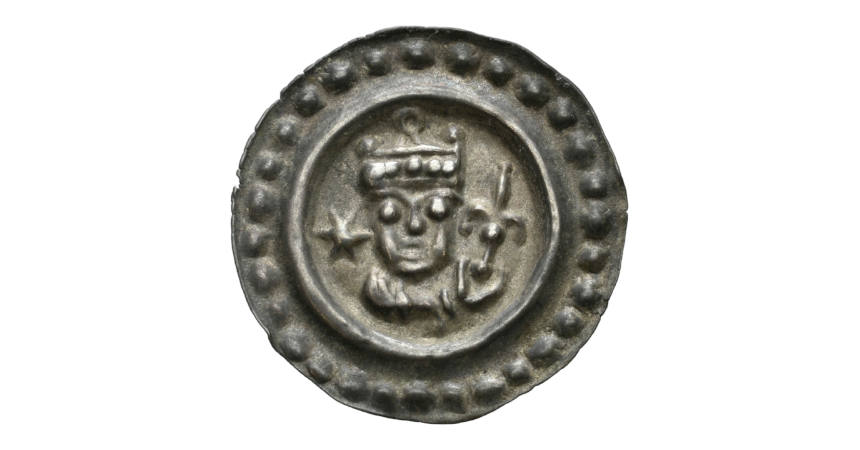Württemberg State Museum – Coin Cabinet
Wenn es kein Logo gibt, wird diese Spalte einfach leer gelassen. Das Bild oben bitte löschen.
(Dieser Text wird nicht dargestellt.)
Altes Schloss – Schillerplatz 6
70173 Stuttgart
Phone: +49 711 89 535-215 oder -216
muenzkabinett@landesmuseum-stuttgart.de
www.landesmuseum-stuttgart.de
The German version of this text was written by Matthias Ohm.
Background
The coin collection of the Württemberg rulers dates back to the end of the 15th century. Eberhard im Bart (reigned 1459-1496) collected coins, especially those of the Roman emperors. A century later, the Stuttgart Kunstkammer (Stuttgart art chamber) was founded. Descriptions of this collection from the early 17th century indicate extensive numismatic holdings. As well as individual gold, silver and copper coins, there are also references to coin bowls, vessels with coins embedded in the base and walls. During the turmoil of the Thirty Years’ War, large parts of the Stuttgart Kunstkammer were lost, including almost all the coins and medals.
Soon after the Peace of Westphalia, Duke Eberhard III (reigned 1633-1674) re-established a Kunstkammer in Stuttgart, paying particular attention to the collection of coins and medals. Roman coins in particular were of great interest to Eberhard III. He employed the Frenchman Charles Patin (1633-1693), one of the leading numismatists of his time, to document and expand these holdings.
In the 18th century, the collections of two lines of the Württemberg dynasty also came to Stuttgart: the collection from Mömpelgard (Montbéliard) was integrated in 1741, and a good decade earlier the collection of almost 8,000 coins and medals from the line of Württemberg-Neuenstadt.
The history of the cabinet since the 19th century is marked by the long tenures of its curators, such as Christoph Friedrich Stälin, Peter Goessler, Elisabeth Nau and Ulrich Klein. With different emphases, they succeeded in expanding the holdings considerably. For example, the Unger Collection (with Celtic coins and coins from the Migration Period) and the Braun von Stumm Collection (with coins from the High Middle Ages) were acquired. There are also important regional finds, such as the Marbach gold hoard of over 1,000 gold coins.
The Collection
The numismatic collection of the Württembergisches State Museum contains around 180,000 objects, mainly coins and medals, but also paper money and stamps, cameos and precious stones, seal stamps and casts, as well as orders and decorations.
There is a special focus on coins and medals minted or found in the territory of present-day Württemberg. These include the coins and medals of the counts, dukes, electors and kings of Württemberg, which have been scientifically analysed by Ulrich Klein and Albert Raff in seven comprehensive volumes.
In the field of contemporary medallic art, the Stuttgart Münzkabinett collects in particular the works of the Baden-Baden medallist Victor Huster.
Exhibitions
On the second floor of the Old Palace in Stuttgart, the exhibition “Legendary Masterworks. Cultural History from Württemberg” can be visited. There are also numismatic exhibits, from Celtic coins to medals from the early 20th century. A special focus is on coin hoards from the end of the 3rd century AD and from the time of the Thirty Years’ War. More information can be found on the museum’s website and on CoinsWeekly.
On the first floor of the Old Palace is the exhibition area “True Treasures”, which contains three of the most important collections of the State Museum: the Collection of Classical Antiquities, the Kunstkammer of the Dukes of Württemberg and the Princely Tombs of the Early Celtic Period.
In the Kunstkammer exhibition unit, a separate room is dedicated to the coin and medal collection, which contains around 250 numismatic objects.
In addition to coins and medals, there are also some larger objects on display: a coin bowl with ancient and modern coins, an incense burner decorated with four Roman coins, a spoon with a medal in the handle to ward off evil, and a sword with a medal depicting a pair of lovers on the hilt. Information about this exhibition can be found on the website of the museum.
Digital Offers
Almost 10,000 objects from the numismatic collection are available on the website of the Württemberg State Museum.
Literature on the History of the Stuttgart Coin Collection
Ulrich Klein, Das Münzkabinett des Württembergischen Landesmuseums Stuttgart, in: Commission Internationale de Numismatique. Compte rendu 31 (1984), pp. 35–43.
Malena Alderete/ Matthias Ohm, Das Stuttgarter Münzkabinett in den Jahren 1933 bis 1945. Strukturen – Personen – Erwerbungen, in: Münzsammlungen in Deutschland zwischen 1933 und 1945. Geldgeschichtliche Nachrichten Vol. 57 (2022), Sonderheft, pp. 346–353.
Memberships
The Württembergische Verein für Münzkunde (Württemberg association for numismatics) is housed in the museum and supports the numismatic collection of the Württemberg State Museum. If you would like to join the association, please contact Dr. Matthias Ohm.















